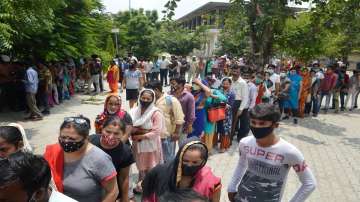Double vaccinated people were three times less likely than unvaccinated people to test positive for the Covid-19 infection, a new research has found.
The study led by researchers at the Imperial College London is based on swab tests taken by nearly 98,233 people themselves at home and their samples were analysed by PCR testing between June 24 and July 12. Of these, 527 tested positive and 254 of these were successfully analysed in the lab to determine their origins, 100 per cent of which were Delta variants.
People who were unvaccinated had a three-fold higher prevalence than those who had received both doses of Covid vaccine, at 1.21 per cent compared to 0.4 per cent.
In addition, analyses of PCR test results also suggest that fully vaccinated people may be less likely than unvaccinated people to pass the virus on to others. This is due to having a smaller viral load on average and therefore, likely spreading less virus.
The study carried out in partnership with Ipsos MORI is available in a pre-print report and will be submitted for peer-review.
"These findings confirm our previous data showing that both doses of a Covid vaccine offer good protection against getting infected. However, we can also see that there is still a risk of infection as no vaccine is 100 per cent effective, and we know that some double vaccinated people can still fell ill from the virus," said Paul Elliott, School of Public Health at Imperial College London.
ALSO READ | Kerala continues to remain concern as over 23,000 Covid cases surface in 24 hours
"So even with the easing of restrictions, we should still act with caution to help protect one another and curb the rate of infections," he added.
The study showed that the highest infection prevalence was found in young people aged 13-24 years at 1.56 per cent or 1 in 65 infected, while the lowest was in people aged above 75 years at 0.17 per cent. Women had a lower risk of testing positive than men (0.55 per cent vs 0.71 per cent).
Previous study data showed that the link between infections, hospitalisations and deaths had been weakening since February.
However, since mid-April, the trends between infections and hospitalisations were growing closer together again, although to a smaller extent for deaths. This could reflect the switch from Alpha to Delta, and a changing mix (towards younger and unvaccinated people) of hospitalised cases, the researchers said.
ALSO READ | COVID: Micro containment zones rise in Bengaluru, civic body on battle mode
Latest India News

